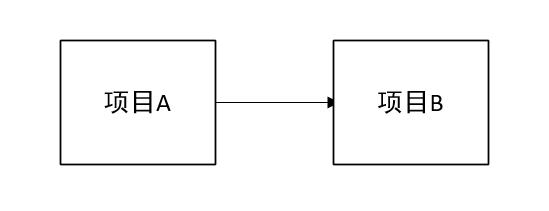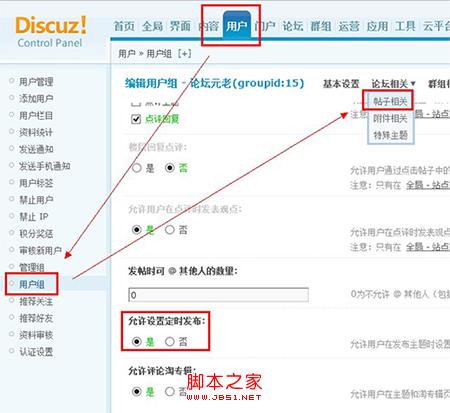Base64.java
?
|
1
2
3
4
5
6
7
8
9
10
11
12
13
14
15
16
17
18
19
20
21
22
23
24
25
26
27
28
29
30
31
32
33
34
35
36
37
38
39
40
41
42
43
44
45
46
47
48
49
50
51
52
53
54
55
56
57
58
59
60
61
62
63
64
65
66
67
68
69
70
71
72
73
74
75
76
77
78
79
80
81
82
83
84
85
86
87
88
89
90
91
92
93
94
95
96
97
98
99
100
101
102
103
104
105
106
107
108
109
110
111
112
113
114
115
116
117
118
|
package com.mstf.des;
import java.io.UnsupportedEncodingException;
/**
* base64编码/解码
* @author ceet
*
*/
public class Base64 {
public static String encode(String data) {
return new String(encode(data.getBytes()));
}
public static String decode(String data) {
try {
return new String(decode(data.toCharArray()),"utf-8");
} catch (UnsupportedEncodingException e) {
e.printStackTrace();
return null;
}
}
private static char[] alphabet = "ABCDEFGHIJKLMNOPQRSTUVWXYZabcdefghijklmnopqrstuvwxyz0123456789+/="
.toCharArray();
private static byte[] codes = new byte[256];
static {
for (int i = 0; i < 256; i++) {
codes[i] = -1;
}
for (int i = 'A'; i <= 'Z'; i++) {
codes[i] = (byte) (i - 'A');
}
for (int i = 'a'; i <= 'z'; i++) {
codes[i] = (byte) (26 + i - 'a');
}
for (int i = '0'; i <= '9'; i++) {
codes[i] = (byte) (52 + i - '0');
}
codes['+'] = 62;
codes['/'] = 63;
}
public static char[] encode(byte[] data) {
char[] out = new char[((data.length + 2) / 3) * 4];
for (int i = 0, index = 0; i < data.length; i += 3, index += 4) {
boolean quad = false;
boolean trip = false;
int val = (0xFF & (int) data[i]);
val <<= 8;
if ((i + 1) < data.length) {
val |= (0xFF & (int) data[i + 1]);
trip = true;
}
val <<= 8;
if ((i + 2) < data.length) {
val |= (0xFF & (int) data[i + 2]);
quad = true;
}
out[index + 3] = alphabet[(quad ? (val & 0x3F) : 64)];
val >>= 6;
out[index + 2] = alphabet[(trip ? (val & 0x3F) : 64)];
val >>= 6;
out[index + 1] = alphabet[val & 0x3F];
val >>= 6;
out[index + 0] = alphabet[val & 0x3F];
}
return out;
}
public static byte[] decode(char[] data) {
int tempLen = data.length;
for (int ix = 0; ix < data.length; ix++) {
if ((data[ix] > 255) || codes[data[ix]] < 0) {
--tempLen;
}
}
int len = (tempLen / 4) * 3;
if ((tempLen % 4) == 3) {
len += 2;
}
if ((tempLen % 4) == 2) {
len += 1;
}
byte[] out = new byte[len];
int shift = 0;
int accum = 0;
int index = 0;
for (int ix = 0; ix < data.length; ix++) {
int value = (data[ix] > 255) ? -1 : codes[data[ix]];
if (value >= 0) {
accum <<= 6;
shift += 6;
accum |= value;
if (shift >= 8) {
shift -= 8;
out[index++] = (byte) ((accum >> shift) & 0xff);
}
}
}
if (index != out.length) {
throw new Error("Miscalculated data length (wrote " + index
+ " instead of " + out.length + ")");
}
return out;
}
}
|
DESUtil.java
?
|
1
2
3
4
5
6
7
8
9
10
11
12
13
14
15
16
17
18
19
20
21
22
23
24
25
26
27
28
29
30
31
32
33
34
35
36
37
38
39
40
41
42
43
44
45
46
47
48
49
50
51
52
53
54
55
56
57
58
59
60
61
62
63
64
65
66
67
68
69
70
71
72
73
74
75
76
77
78
79
80
81
82
83
84
85
86
87
88
89
90
91
92
93
94
95
96
97
98
|
package com.mstf.des;
import java.security.Key;
import java.security.SecureRandom;
import javax.crypto.Cipher;
import javax.crypto.KeyGenerator;
/**
* DES对称算法(加密/解密)
*
* @author ceet
*
*/
public class DESUtil {
private Key key;
public DESUtil(String strKey) {
setKey(strKey);
}
public void setKey(String strKey) {
try {
KeyGenerator generator = KeyGenerator.getInstance("DES");
generator.init(new SecureRandom(strKey.getBytes())); // 根据参数生成key
this.key = generator.generateKey();
} catch (Exception e) {
e.printStackTrace();
}
}
public String encrypt(String source) {
return encrypt(source, "utf-8");
}
public String decrypt(String encryptedData) {
return decrypt(encryptedData, "utf-8");
}
public String encrypt(String source, String charSet) {
String encrypt = null;
try {
byte[] ret = encrypt(source.getBytes(charSet));
encrypt = new String(Base64.encode(ret));
} catch (Exception e) {
e.printStackTrace();
encrypt = null;
}
return encrypt;
}
public String decrypt(String encryptedData, String charSet) {
String descryptedData = null;
try {
byte[] ret = descrypt(Base64.decode(encryptedData.toCharArray()));
descryptedData = new String(ret, charSet);
} catch (Exception e) {
e.printStackTrace();
descryptedData = null;
}
return descryptedData;
}
private byte[] encrypt(byte[] primaryData) {
try {
Cipher cipher = Cipher.getInstance("DES"); // Cipher对象实际完成加密操作
cipher.init(Cipher.ENCRYPT_MODE, this.key); // 用密钥初始化Cipher对象(加密)
return cipher.doFinal(primaryData);
} catch (Exception e) {
e.printStackTrace();
return null;
}
}
private byte[] descrypt(byte[] encryptedData) {
try {
Cipher cipher = Cipher.getInstance("DES"); // Cipher对象实际完成解密操作
cipher.init(Cipher.DECRYPT_MODE, this.key); // 用密钥初始化Cipher对象(解密)
return cipher.doFinal(encryptedData);
} catch (Exception e) {
e.printStackTrace();
return null;
}
}
public static void main(String[] args) {
String code = "ceet";
DESUtil desUtil = new DESUtil("key");
String encrypt = desUtil.encrypt(code);
String decrypt = desUtil.decrypt(encrypt);
System.out.println("原内容:" + code);
System.out.println("加密:" + encrypt);
System.out.println("解密:" + decrypt);
}
}
|
相关文章
猜你喜欢
- 个人服务器网站搭建:如何选择适合自己的建站程序或框架? 2025-06-10
- 64M VPS建站:能否支持高流量网站运行? 2025-06-10
- 64M VPS建站:怎样选择合适的域名和SSL证书? 2025-06-10
- 64M VPS建站:怎样优化以提高网站加载速度? 2025-06-10
- 64M VPS建站:是否适合初学者操作和管理? 2025-06-10
TA的动态
- 2025-07-10 怎样使用阿里云的安全工具进行服务器漏洞扫描和修复?
- 2025-07-10 怎样使用命令行工具优化Linux云服务器的Ping性能?
- 2025-07-10 怎样使用Xshell连接华为云服务器,实现高效远程管理?
- 2025-07-10 怎样利用云服务器D盘搭建稳定、高效的网站托管环境?
- 2025-07-10 怎样使用阿里云的安全组功能来增强服务器防火墙的安全性?
快网idc优惠网
QQ交流群
您的支持,是我们最大的动力!
热门文章
-
2025-05-27 35
-
2025-05-25 22
-
2025-05-29 93
-
Win10ctrl键失灵怎么办?Win10ctrl键失灵的解决方法
2025-05-27 64 -
2025-05-29 100
热门评论












